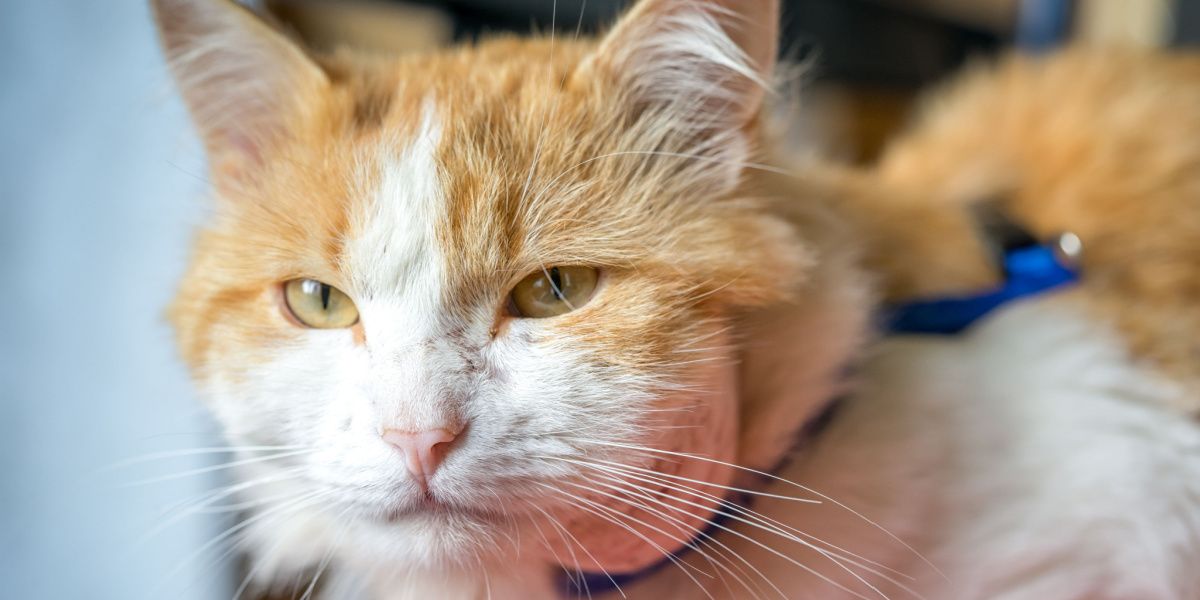
Abscesses are common in cats. This article aims to explain all about abscesses, including the possible consequences for your cat’s health.
An abscess is an accumulation of pus under the skin, causing a fluid-filled swelling, sometimes referred to as a pocket of pus. The tissues adjacent to this swelling are often discolored, inflamed, and painful.
What Causes an Abscess?
An abscess develops when bacterial infection is somehow introduced beneath the skin. The bacteria multiply, prompting the animal’s immune system to respond with inflammation, and this reaction generates liquid pus, which causes the swelling of the abscess to develop.
Pus is a foul-smelling, thick, yellow, green, brown, or reddish opaque liquid made up of white blood cells and bacteria mixed with general debris and fluid seeping in from surrounding blood vessels and other bodily tissues.
In cats, an abscess is most commonly caused by a cat fight. Cats’ teeth and claws harbor bacteria, and if a cat’s skin is punctured in a fight, these bacteria are injected beneath the surface of the skin. The body’s defenses rally to protect the body against the bacteria, and the result is the accumulation of pus which we refer to as “an abscess.”
Another less common cause of abscesses is dental abscesses, where a tooth root canal is exposed leading to a tooth root abscess.
Rarely, abscesses might also be seen inside a body cavity, for example, following surgery or following a penetration wound of some kind.
What Are the Signs of an Abscess?
There are five main signs of an abscess:
- A swelling on the skin, most commonly affecting the head, neck, limb, tail, or lower back
- Discolored overlying skin (e.g., yellowing, purplish, reddened)
- A puncture wound, or a small scab, on the skin in the area of the abscess; pus might be oozing from this
- The area around the swelling is usually painful (for example, the cat might be limping)
- The cat might act dull and inapparent; a high temperature (fever) commonly accompanies an abscess
How Does a Veterinarian Make a Diagnosis of an Abscess?
1. Detailed History Taking
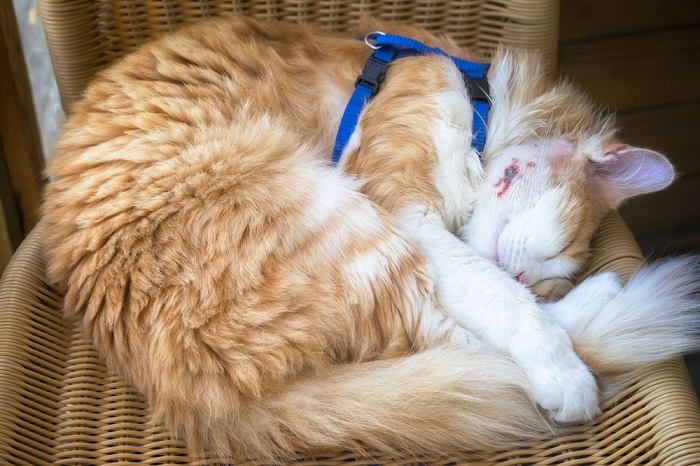
Your vet will take a detailed history of your cat’s lifestyle and routine to try to determine what’s going on.
Your vet will discuss every aspect of your cat’s lifestyle and review their overall health. Many factors are important in this history. For example, senior cats are more prone to certain problems than younger cats, cats that are free-ranging are more prone to abscesses than indoor-only cats, and cats that are known to fight with other cats are more at risk.
2. Physical Examination
Any investigation of any problem in a cat starts with a careful, thorough physical exam of your pet. Your veterinarian will check your cat’s body carefully all over, feeling the cat all over, checking for any abnormalities.
This will normally include taking the cat’s temperature, listening to their chest with a stethoscope, and weighing the cat. The swollen area will be closely inspected, and the overlying fur may be clipped away, so that the surface of the skin can be clearly seen.
3. Routine Blood and Urine Tests
Your veterinarian may or may not carry out blood work, including the usual panel of diagnostic tests, such as hematology (blood count) and biochemistry profiles (including electrolytes). Simple urinalysis tests might also be recommended.
This type of work up is known as the minimum database, and it’s carried out to review most sick cats, regardless of the signs of illness. It provides important background information about the health of your cat.
Specific blood tests against feline leukemia virus (FeLV) and feline immunodeficiency virus (FIV) might be suggested, as these viruses are sometimes linked to an increased incidence of abscesses in some cats.
4. Other Laboratory Work
A sample of pus may be collected and sent to the laboratory for bacterial culture, including determining sensitivities to different antibiotics. This is not normally carried out, but there are circumstances where a vet may feel that it is appropriate.
One of a wide number of specific bacterial species may be isolated, such as fusobacterium, clostridium, bacteroides, corynebacterium, pseudomonas, mycoplasma, nocardia, actinomyces, pasteurella multocida, bartonella, escherichia coli, staphylococcus, streptococcus, or others.
Different bacteria may require different treatment instructions using specific antibiotics, as appropriate.
5. Additional Testing
Other tests such as radiography (x-rays) and ultrasound examinations may rarely be recommended to visualize different parts of your cat’s body if the abscess seems complicated by involvement with other structures in some way.
How Much Does It Cost To Treat a Cat With an Abscess?
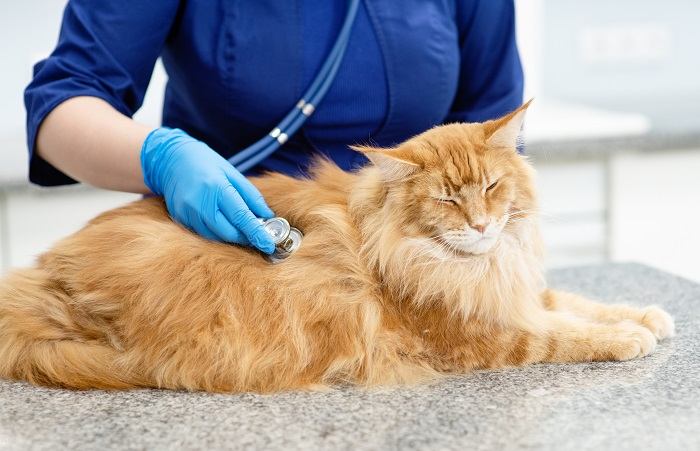
Your vet will take your cat’s vital signs and feel all over their body during the exam.
The cost of treating an abscess depends entirely on the location and severity of the abscess. It could be less than $150 if a cat has a simple, easily treated abscess or more than $2,000 if an abscess is unusually complicated.
How Are Abscesses Treated?
Treatment of abscesses first involves clipping the fur around the abscess to prevent the accumulation of infected discharges. Next, the veterinarian will lance the abscess, to allow the pus to drain out effectively. This often requires sedation or general anesthesia.
Once the abscess has been lanced and the pus drained, the cavity of the abscess will often be flushed out with sterile saline. It’s important to enable continued drainage of newly produced pus. Sometimes just lancing the abscess is enough, but in other cases, a latex rubber drain might be inserted and held in place by sutures. The drain usually stays in place for two to five days.
Regular cleaning around the area of the opening into the abscess is necessary to prevent the accumulation of pus and debris in the area. Appropriate antibiotics are usually prescribed to prevent the continued multiplication of bacteria. Pain relief should always be given to cats with abscesses as these can be very painful.
Your vet might recommened an Elizabethan collar to prevent your cat from traumatizing the area by licking or chewing, and to ensure that they do not remove a drain if it has been put in place.
Depending on the area where you live, your veterinarian might check on your cat’s rabies vaccination status, because rabies is transmitted via bites.
Monitoring and Prognosis
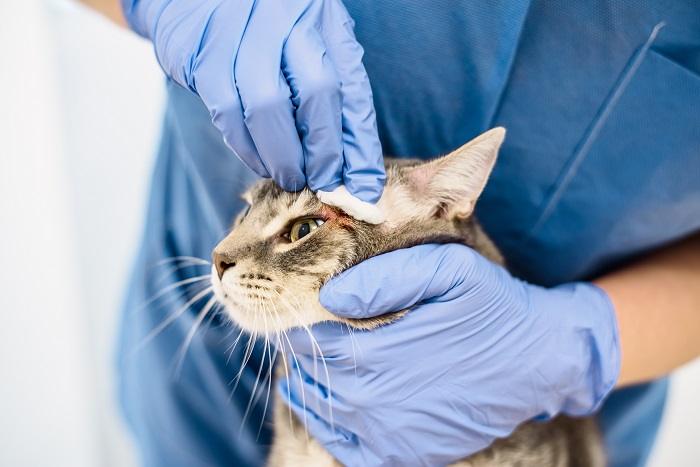
Your vet will want to see your cat for recheck appointments to make sure the abscess is healing properly.
The degree of monitoring needed depends on the individual case, but in general, cats with abscesses need regular followup rechecks (e.g. every two to three days) by their veterinarian to ensure that healing is taking place, until they have fully returned to normal. Thorough rechecks ensure that recurrence is less likely.
The prognosis for abscesses is generally good, but your own veterinarian will be able to give you the best answer to this question.
Also Read: Hair Loss In Cats: Causes, Symptoms, & Treatment
Frequently Asked Questions
Will a cat abscess heal on its own?
An abscess in a cat might eventually heal naturally but this could take many weeks, and your cat will suffer during this period, with the risk of serious complications. For this reason, the professional help of a veterinarian should always be sought when a cat has an abscess.
How do you treat an abscess on a cat?
First, the vet will clip the fur around the abscess. Second, they will lance the abscess to allow the pus to drain. Third, your vet will establish continuing drainage of pus from the abscess. Next, they will provide antibiotic cover to prevent continued growth of bacteria in the abscess. Pain relief is another important part of treatment of abscesses.
Can a cat survive an abscess?
Abscesses are not usually life threatening, but prompt treatment is important to ensure that they do not become more complicated than usual. An untreated abscess does have the potential to create a significant threat to a cat’s life and well-being.
What can cause an abscess on a cat?
Cat abscesses are usually caused by cat bites or scratch injuries following fights with other cats or sometimes dogs. There are many other possible causes, from tiny foreign bodies (such as grass seeds) to puncture wounds from the environment (e.g., standing on a sharp object).





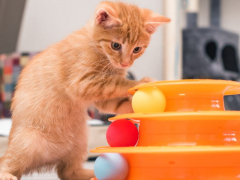

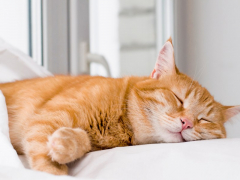
My male cat has been inactive more than usual,loss of diet and his fur seems dull I guess I could say please get back to me asap thank you
It is impossible to diagnose an issue like this without a physical examination, so the best advice is to take him to your local veterinarian so that this can be properly checked out.